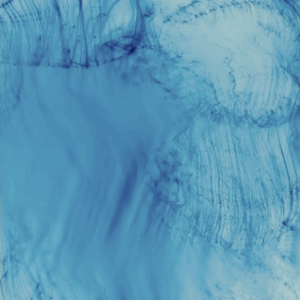JTF (just the facts): A total of 12 color photographs, framed in white and unmatted, and hung against white walls in the main gallery space. All of the works are pigment prints, made between 1990 and 2019, and printed in 2020. Physical sizes are either 20×24, 20×30, or 40×60 inches (or the reverse), and the prints are available in editions of 10 (for the smaller sizes) and 5 (for the larger size) respectively. (Installation shots below.)
Comments/Context: Back in 1995, Martin Parr gathered together a selection of his photographs of global tourism in the photobook Small World. While photographers have been making images at famous sites since the Grand Tour days of the 19th century, Parr’s wry photobook was unusual in that it paid close attention to behavior of the visitors rather than the grandeur of the locations. Parr watched as people followed tour leaders, piled into buses and boats, posed for snapshots, fought off aggressive souvenir sellers, wrestled with maps, and donned plastic raincoats to fend off downpours at some of the world’s most well known places. With a sharp eye for the absurdity of the growing tourism industry, Parr showed us something we hadn’t seen before, and did it with a sense of visual wit and intelligence that felt fresh and unexpected.
In the decades since, Parr has continued his voracious globe trotting, continuing to notice subtly ridiculous human eccentricities taking place in plain sight all over the world. This small show essentially updates the central premise of the original Small World project, adding more contemporary examples of Parr’s wry observation. Not only have the dated fashions and bulky video cameras of the 1980s and 1990s now been replaced with more modern equivalents, in this time of pandemic lockdowns, travel restrictions, and large gathering bans, his images offer us an almost nostalgic reminder of the relative joys of visiting ancient ruins, natural wonders, and national landmarks with hundreds of anonymous jet lagged strangers.
One major change that has taken place in the intervening years is the now-ubiquitous spread of smartphone cameras, and the selfie taking impulse that accompanies them. While Parr’s now classic 1990 image of multiple tourists posing as if holding up the Leaning Tower of Pisa reminds us that Instagrammable setups have been around for quite a long time, the newer images on view update the wholesale intrusion of smartphones into touring, and armed with these cameras, we seem to be even more oblivious to those around us than ever before. In one photograph, a pair of women in paisley print pants and a fake turban mugs for a shot atop an Indian elephant, while another couple (also on an elephant), looks on with disdain, the Amer Fort in Jaipur seemingly forgotten in the background. The same fate awaits the ornate Shaftesbury fountain in the middle of Piccadilly Circus in London, where two women seem more interested in photographing their bubble teas than the surroundings. And Parr captures the collective insanity of mediating our entire experience through our phones with an image of the dense throngs around the Mona Lisa at the Louvre in Paris, each person holding up a phone to take a picture of the painting rather than actually looking at it.
Many of the other images on view get in several steps closer, with Parr cropping his subjects down more tightly and turning them into eye-popping color studies. This approach amplifies the satire, as it cuts away the situational narrative and tightens in on the resonant details and unlikely (or some cases fortuitous) juxtapositions. He isolates the bright pinks and purples found in the clothing of both horse racing fans at the Kentucky Derby and tea sipping ladies in Sri Lanka. He exaggerates the echoes of saturated orange in the suntanned skin and the beach towel of a Gucci-sunglassed woman in Cannes. And he sets the spiky yellow hair of a punk mohawk against the dapper red of a London phonebooth, smashing competing visual clichés in to a single frame.
Parr’s visual humor gets a bit more biting and almost caustic in two other images. In one, he finds a Grand Canyon tourist incongruously wearing an Indian headdress while taking in the wide vista; in another, he discovers a line of tour buses parked at the foot of the pyramids in Giza. In both pictures, we see the extremes of bad judgment and commercialization that once plagued such places. Our initial reaction might be to chuckle at such finds, but longer engagement with photographs like these leads to slightly grimmer conclusions about the choices being made. This is often the case with some of Parr’s strongest photographs – they seem playfully mocking at first, but later reveal themselves to subtly cut a little deeper.
Given Parr’s prolific output, this world travel theme could easily be multiplied to include not just a dozen recent photographs but many, many more, simply by including more geographies – he’s been mining this seam for a long time now, and there are likely many worthy options to choose from. And in a time when we are all suffering from wanderlust, Parr’s photographs provide a range of vicarious armchair journeys that just might satisfy our thirst for the foreign. Trapped by the mind numbing rhythms of our own homes, Parr’s eye for global strangeness is the kind of transporting balm we’ve been looking for.
Collector’s POV: The prints in this show are priced at £4000 for the smaller sizes and £9000 for the larger size. Parr’s prints are intermittently available in the secondary markets, with recent prices ranging between roughly $1000 and $15000.










